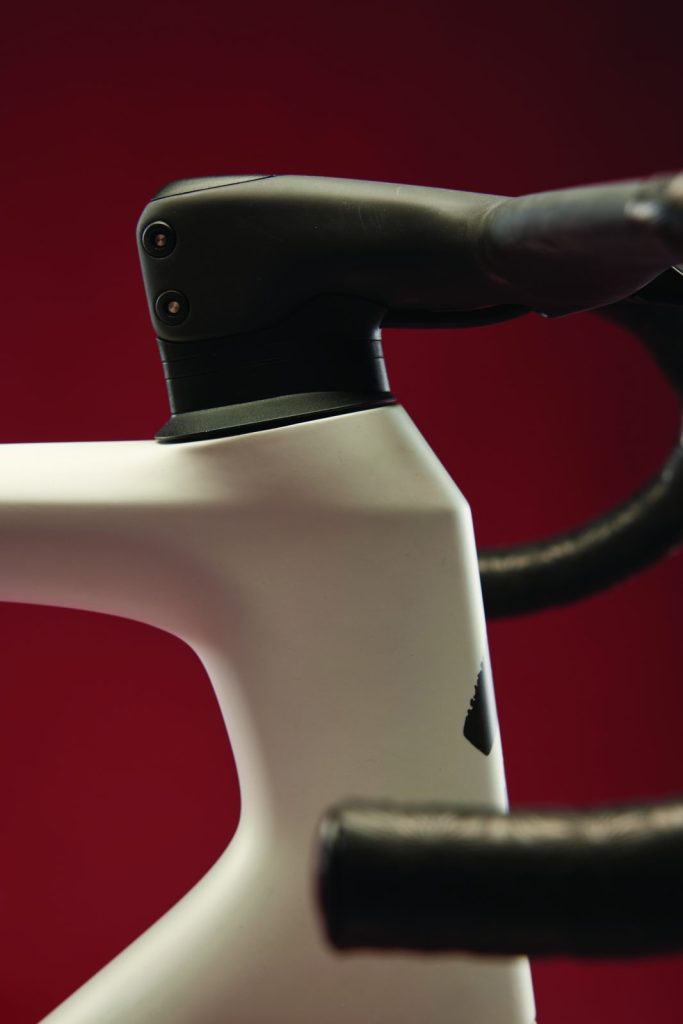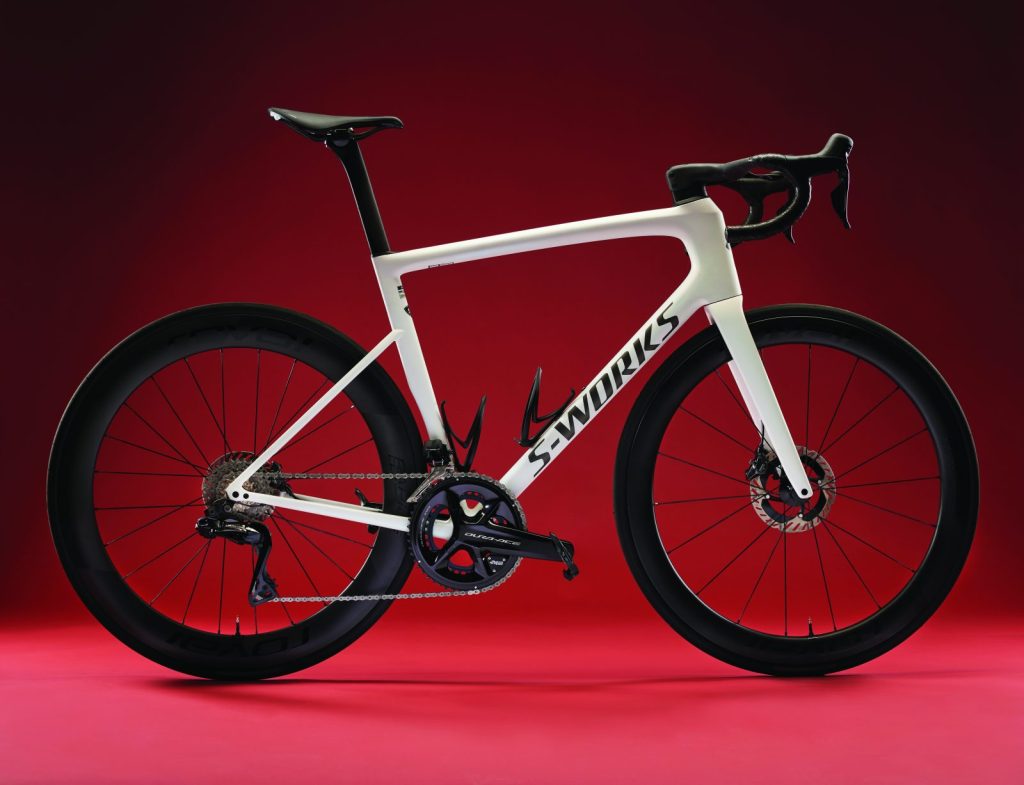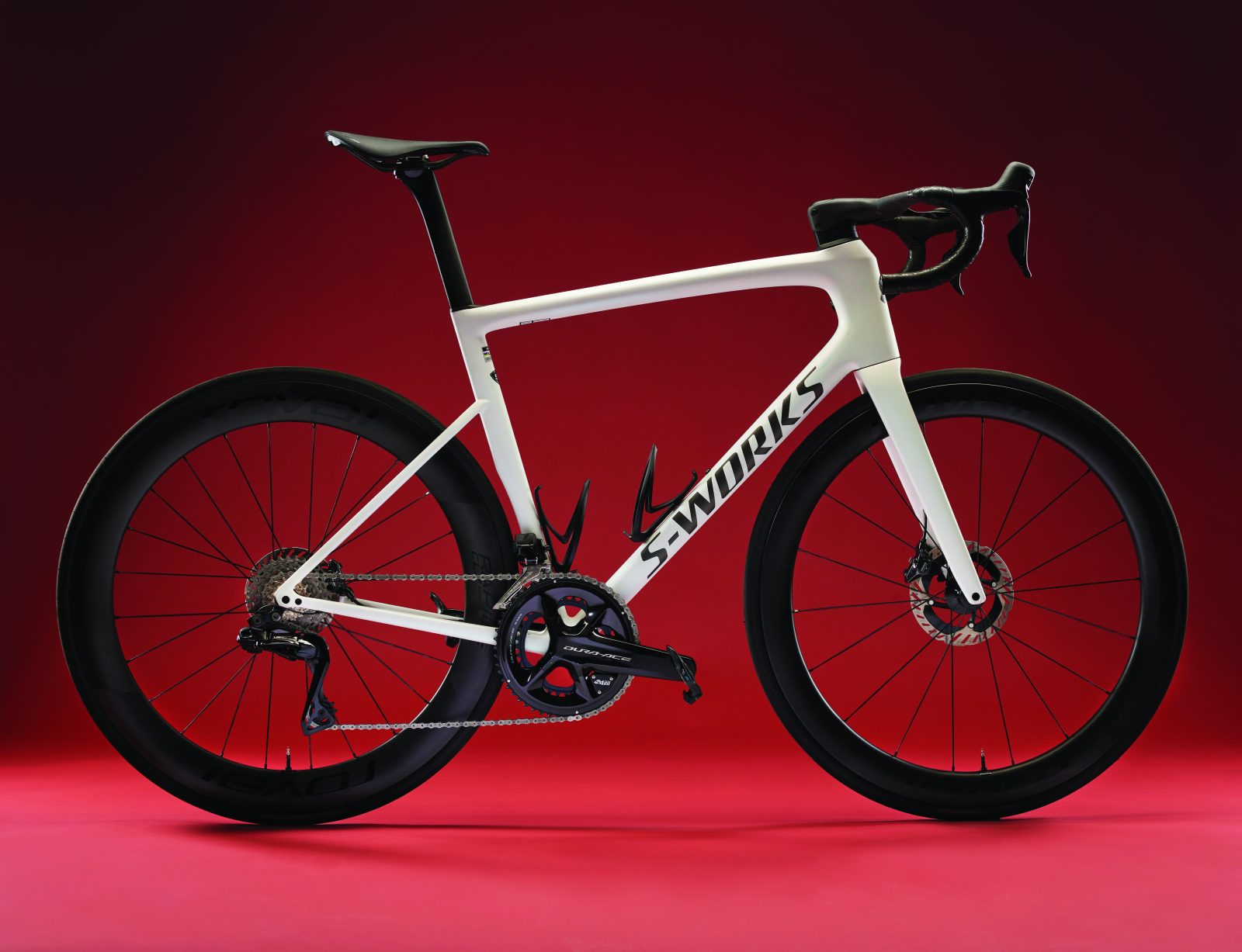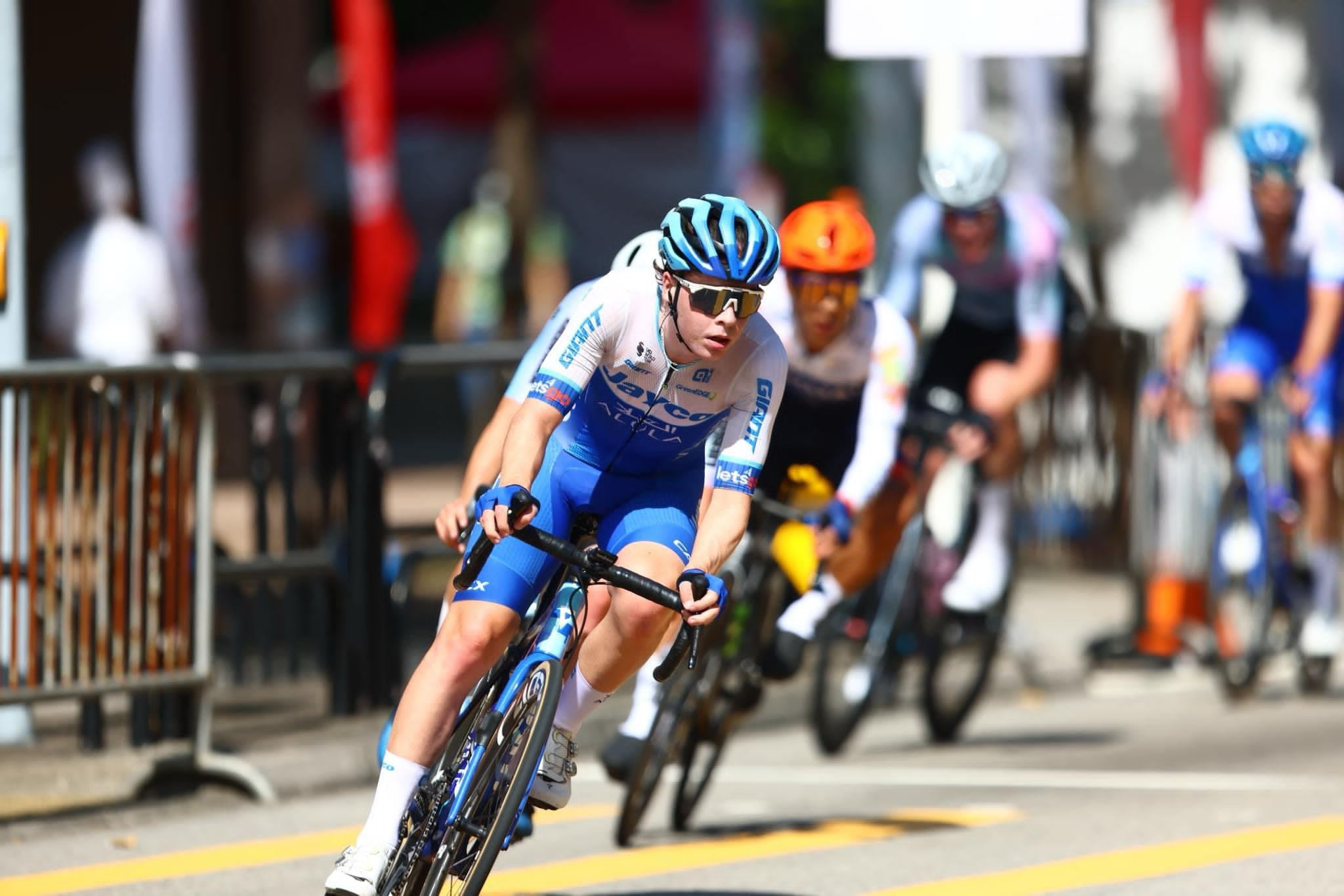Specialized’s lightweight race bike is now finally faster than the Venge

Words SAM CHALLIS
Photography TAPESTRY
When Specialized launched the previous version of its Tarmac, the SL7, the company killed off its Venge aero platform, suggesting the SL7 was so well-rounded that the Venge was no longer necessary.
Crucially, the SL7 was still slower in drag terms than the Venge, but Specialized says the move to SL8 makes the Tarmac faster than the Venge ever was.
The bike made its debut at the 2023 Road Race World Championships and was ridden to victory by Belgium’s Lotte Kopecky, which seems fitting given how successful the model has been over its 20-year and eight-generation history.
Thanks to features such as a sleek, integrated cockpit, deepened head tube and slimmer seat tube, Specialized says the new bike is 16.6 seconds more efficient than the Tarmac SL7 it replaces over a flat 40km course at 45kmh.
Despite that, the brand claims a notably light 685g frame weight (size 56cm in the lightest paint scheme).
That’s more than 100g lighter than the SL7 and means the bike can sit on the 6.8kg UCI weight limit including necessary auxiliary components such as pedals, race transponder and number.
On top of that, the bike’s stiffness-to-weight ratio is up by 33% and Specialized says it has even managed a little bump in comfort, claiming the new bike is 6% smoother.

Going with the flow
For the past decade, Specialized has used its inhouse ‘Win Tunnel’ in the development of its race bikes, and it remains the only brand to have its own wind-tunnel.
Yet to create a truly well-rounded bike, there isn’t the opportunity to extend too far down the path of maximising any one particular attribute.
‘We didn’t waste time chasing diminishing aero returns,’ says Specialized product manager Richard Salaman.
‘We tuned areas that don’t primarily affect aerodynamics to promote other attributes, such as comfort or structural efficiency.’
This is why the new Tarmac doesn’t have a particularly deep down tube or seat tube.
The brand says deep aerofoil tubes look fast, but beyond their leading edge actually create unfeasibly small aero advantages because they sit in ‘dirty’ air disturbed by the front wheel and rider’s legs.
While a convincing case for the deep tubes evidenced on many of the Tarmac’s competitors can no doubt be made, it is indisputable that aerofoil tube profiles are less structurally efficient in weight and compliance terms.
This was a factor in the svelte form of many of the new Tarmac’s tubes: by slimming them down, Specialized says it could make the bike faster in the real world by introducing more flex and making the frame lighter.
‘The new seat tube is thinner,’ says Salaman. ‘This both makes it faster in the wind and contributes to the SL8’s improved compliance figures.
We took the experience we gained from the development of our Aethos and applied it to the Tarmac.’
Quite literally, in fact. Salaman says the bike went through 54 iterations, and the first one was essentially using the Aethos layup in the Tarmac’s frame shape.
‘A lot of the Tarmac’s final tube shapes that weren’t directly responsible for aero gains were inspired by the Aethos,’ he adds.
Fast features
With other attributes tuned in elsewhere, the front of the bike was left to do a lot of the heavy lifting in aero terms.
The SL8 uses Roval’s Rapide integrated cockpit, released a couple of months ago, that is said to contribute around 80% of the five-watt advantage the bike holds over the SL7.
Specialized Tarmac SL8 S-Works Di2, $19,900, specialized.com/au




